The Ed Sullivan Show (1948–1971), an hour-long variety show, was broadcast live on CBS. With no two sets the same, the program embraced the look and sensibility of a number of contemporary avant-garde movements committed to making the experience of art as immediate as possible.
Pop art introduced the imagery of everyday life into the realm of high art. Color Field painting and Op art presented spectators with sweeping fields of color or with instantaneous and dizzying optical illusions. Minimalist sculpture was fabricated from everyday industrial materials; eschewing the artist’s hand, it took abstraction to a new level of pure form.
Stage sets inspired by these movements provided visually intriguing backdrops; vivid but abstract, they were designed to keep performers in the limelight. Much like the art that influenced them, these sets, rather than summoning viewers into imaginary realms, rooted them in a fresh, dynamic present, accentuating the variety format’s unique dependence on live performances.
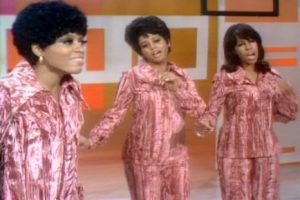
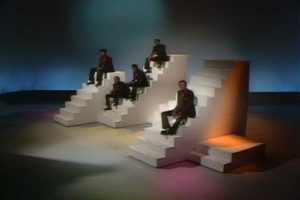
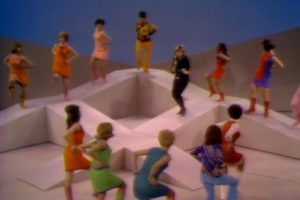
Screen captures, The Ed Sullivan Show, CBS, 1966–1969. Courtesy of The Ed Sullivan Show / SOFA Entertainment, Los Angeles
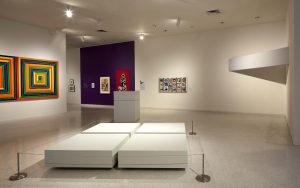
Installation view, Revolution of the Eye, NSU Art Museum Fort Lauderdale, October 2015. Courtesy of NSU Art Museum. Art that inspired the set design of the Ed Sullivan Show:
(Far left) detail, Frank Stella, Fortin de las flores, 1966. Acrylic on canvas. Collection of NSU Art Museum Fort Lauderdale, Nova Southeastern University
(Purple wall, middle) Roy Lichtenstein, Sweet Dreams, Baby, 1965. Silkscreen print on heavy smooth white woven paper. Collection of NSU Art Museum Fort Lauderdale
(Purple wall, right) Roy Lichtenstein, Pistol, 1964. Felt. Collection of Museum of Modern Art
(Mid-wall) Yaacov Agam, Paam, 1969. Oil on aluminum, mounted on wood board. Collection of The Jewish Museum, New York, gift of William Benenson, 1991-49
Op art paintings created dizzying, ever-changing optical illusions and experiences. Agam’s intention, for example, was to produce a work of art that “could not be perceived except in stages,” and that “exists in the midst of coming into being.”
(Upper-right) Robert Morris, Untitled (Corner Beam), 1964. Painted plywood. Collection of NSU Art Museum Fort Lauderdale
(Foreground) Robert Morris, Untitled (Permutable Floor Slab), 1966 (fabricated 2015). Painted plywood, 4 units. Collection of the artist and Barbara Castelli
Exemplified by these sculptures by Robert Morris, minimalist sculpture, presented without pedestals, erased the barrier between object and viewer. With its optical distortions of seemingly familiar elemental forms—a cube with a sloped side, for example, or positioned at an oblique angle—this sculpture could not be understood from a single point of view, but only by sustained and direct interaction. In order to apprehend the full experience of a work, the spectator was compelled to move around and even walk directly on, into, or through it.
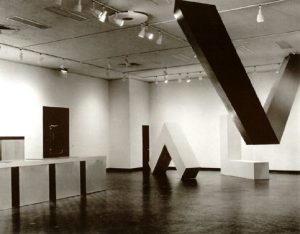
Installation views, Primary Structures: Younger American and British Sculptors, The Jewish Museum, 1966. Courtesy of the Jewish Museum
Primary Structures, organized by Kynaston McShine for the Jewish Museum, was the first major museum exhibition devoted to Minimalism. The clean, dynamic forms of the art are reflected in contemporaneous television stagecraft, most notably the sets of The Ed Sullivan Show.